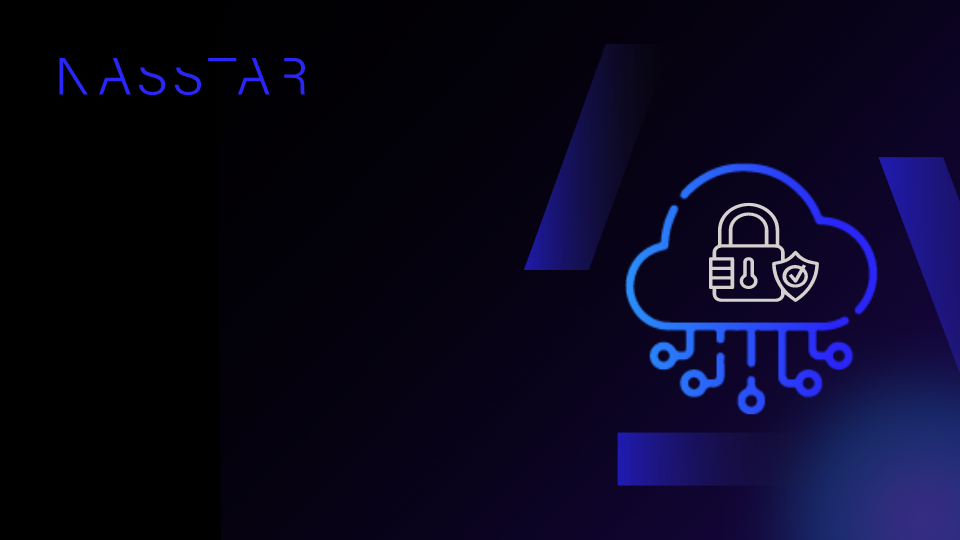What are the security risks of cloud computing?

According to recent estimates, up to 85% of companies now use two or more cloud services. The ability to store and access data and applications remotely in the cloud offers unprecedented convenience, mobility, and flexibility. But with these advantages can come security risks.
Protecting access to corporate networks and cloud data storage is of critical importance. A security breach or data loss can have severe consequences and a recent survey found that SaaS security has become a top priority for 80% of organisations.
Different types of cloud computing models have their own potential weaknesses. For example:
- Infrastructure as a Service (IaaS) platforms can be open to misconfiguration issues.
- Platform as a Service (PaaS) can leave DevOps teams vulnerable to data leakage and insider threats.
- Software as a Service (SaaS) solutions can create a large, unmanageable attack surface for IT teams.
While each service has its challenges, there are also security considerations that apply to all cloud computing models. But even with these considerations, this shouldn’t put you off cloud computing. The cloud is inherently more secure than legacy setups, largely due to the principles followed by cloud providers like AWS and Microsoft and the Cloud Shared Responsibility Model.
The Cloud Shared Responsibility Model is something that every business should be aware of. It is a security and compliance framework that outlines the roles of cloud vendors and their customers when securing aspects of their cloud environment.
In this blog, we’ll look at the security risks of cloud computing, their causes, and potential fixes. But first, we’ll look at why cloud security is so essential.
What are the consequences of cybersecurity breaches?
When it’s done well, you don’t notice cybersecurity, but one single incident can have enormous consequences. With so much information stored in the cloud, and so much on the line, organisations cannot afford to neglect their security posture. Put simply: the importance of cloud security cannot be overstated.
A security lapse can potentially bring consequences, such as:
- Financial losses: Breaches can cause downtime, penalties, and a loss of business — all of which impact the bottom line. A 2022 IBM report found the average cost of a data breach to be almost £3.5 million.
- Reputational damage: Customers want to know that their information is in safe hands. A data breach can lower brand trust and give an advantage to competitors. In 2022, Australia’s second-largest mobile provider lost up to 10 per cent of its customer base after sensitive data was stolen by attackers.
- Legal and regulatory implications: Likewise, breaches of data protection laws can bring severe financial and legal issues. We’ve already seen companies fined hundreds of millions of pounds for falling foul of the EU’s General Data Protection Regulation (GDPR).
So what common cloud security concerns should companies look for?
Common security issues in cloud computing
There are several common cloud security threats that every business should consider.
Cybercriminal access to cloud infrastructure
Strong cloud security involves many strategies. One of the most important is implementing robust access controls and authorisation mechanisms. User credentials provide bad actors with the easiest path into cloud environments, often bypassing many other security measures.
Data breaches
Unauthorised cloud access often leads to critical data leakage, bringing knock-on consequences. Insider threats come from within an organisation and may not always be malicious. An employee might accidentally expose data through human error, for example. Implementing stringent access control measures, such as the principle of least privilege (PoLP), can help minimise this risk.
Cyber attacks
Threats like malware and social engineering attacks like phishing have the potential to compromise cloud security. The effect of these attacks can be mitigated by regular staff training sessions.
Poor network security
Unsecure Application Programming Interfaces (APIs) are also gateways to a company's cloud infrastructure. If poorly configured, insecure APIs can serve as a lucrative attack vector for cybercriminals.
Denial-of-Service attacks
These attacks can overwhelm systems, causing downtime and disruptions to service availability. Thankfully, many cloud providers offer automatic scaling alongside protection services to mitigate this risk.
Inadequate data encryption
One of the most crucial cloud security techniques is to encrypt sensitive data at rest and in transit. Should a cybercriminal intercept that data, it is unreadable without the decryption key.
According to leading studies, up to half of all sensitive data held in cloud storage could be unencrypted. This should be a huge concern to businesses and their customers. With data privacy such a vital part of modern life, it’s important to encrypt any data you wouldn’t want a hacker to see.
Misconfiguration of the cloud environment
Without the right expertise and regular reviews, cloud environments can become misconfigured, potentially opening the door to cyberattacks. Human error is one of the leading causes of cloud misconfiguration, while inadequate firewall rules can expose cloud resources to the public internet.
Managing security across multiple public cloud providers and on-premise infrastructure can also be complex. Unified security management and policy enforcement can help reduce vulnerabilities, especially in hybrid and multi-cloud environments.
Regulation and compliance issues
Compliance with leading regulations like GDPR, HIPAA, and PCI-DSS requires continuous effort and improvement. Likewise, laws governing the protection of sensitive information and the use of cloud storage can impact how you store data.
To meet compliance, it’s essential to understand what is required of your systems. This will change based on your location, industry, and business type. Regular audits, data protection measures, and a culture of compliance can also help you meet these challenges.
How to protect against cloud computing security risks
Protecting against the security risks of cloud computing requires several important strategies:
- Use strong security controls: There are several security controls that help protect access to your cloud environment. Multi-factor authentication (MFA) requires users to provide at least two forms of identity verification before accessing data and offers excellent protection for user logins.
Regular staff training is essential for ensuring they understand the latest threats and how to handle them. This can include training on phishing recognition and handling sensitive data. Organisations should also enforce strong password policies to avoid weak and repeated credentials. - Put appropriate access control strategies in place: Use Role-Based Access Control (RBAC) to restrict system access based on the needs of individual users. By granting only the necessary access, operations teams can reduce potential attack surfaces from insider threats or compromised accounts.
It’s also vital to monitor the activities of super users. Privileged Access Management (PAM) is a strategy that ensures privileged access is granted only when needed, and that such access is monitored and logged. - Prioritise data security: Along with security controls and granular access policies, you’ll need to encrypt your sensitive data. After all, proper data security means preparing for the worst. Encrypt data at rest and in transit. Then, even if it is intercepted or accessed without authorisation, it remains unreadable and, essentially, useless.
- Have backups and disaster recovery plans: Regular backups and the use of redundant storage can ensure that your data is not lost in the event of a disaster. You might keep multiple copies of data across different geographical locations to mitigate things like downtime and natural disasters. Having these plans in place means you can recover from incidents quickly, with minimal data loss.
- Review your security posture regularly: It’s important to remember that protecting your cloud systems is an ongoing process. Your environment and outside threats will both change, so plan to adapt. Regularly conducting vulnerability scanning and penetration testing helps identify potential weak spots in the security infrastructure before attackers can exploit them. They will also help you meet evolving compliance needs.
- Choose a reputable cloud service provider: Many companies find it extremely beneficial to work with an experienced cloud services provider (CSP). Reputable CSPs have strong security measures in place, working with the latest cybersecurity solutions and technology. You’ll also benefit from a shared responsibility model. This lets you know precisely which security aspects you are responsible for and which your CSP will manage, ensuring you don't overlook essential security considerations.
How Nasstar can help
The most common security risks of cloud computing include protecting access to infrastructure, avoiding data breaches, and minimising business interruptions. To mitigate these risks, strong security controls and regular staff training are crucial. Prioritise data security with encryption at rest and in transit, back up data regularly and have disaster recovery plans in place. Frequent reviews are also vital for meeting future security risks.
For many companies, partnering with a reputable cloud service provider can help ensure robust cloud security. Nasstar’s cloud solutions include real-time monitoring, advanced technologies, and redundant storage, helping you protect against many common cloud computing security risks.
Speak to a specialist to learn more.
Frequently Asked questions
The top security threats and security risks associated with cloud computing include:
- Cyberattacks: These could take various forms like malware, ransomware, or phishing, leading to unauthorised access and potential data breaches.
- Insecure APIs: Poorly designed or insecure APIs can be openings for cybercriminals into a cloud environment.
- Data loss: Accidental deletion or corruption of information could lead to critical data loss.
- Misconfiguration: Improper cloud environment setup, often due to human error, can open attack opportunities.
- Compliance concerns: Failing to adhere to regulatory standards like GDPR, HIPAA, and PCI-DSS can lead to severe consequences like fines and reputational damage. These threats underline the importance of a robust and comprehensive cloud security strategy.
Cloud computing security involves a range of measures, including:
- Data encryption
- Access controls
- Network security
- Physical security
- Real-time monitoring systems.
These measures work together to protect data confidentiality, integrity and availability in the cloud.



